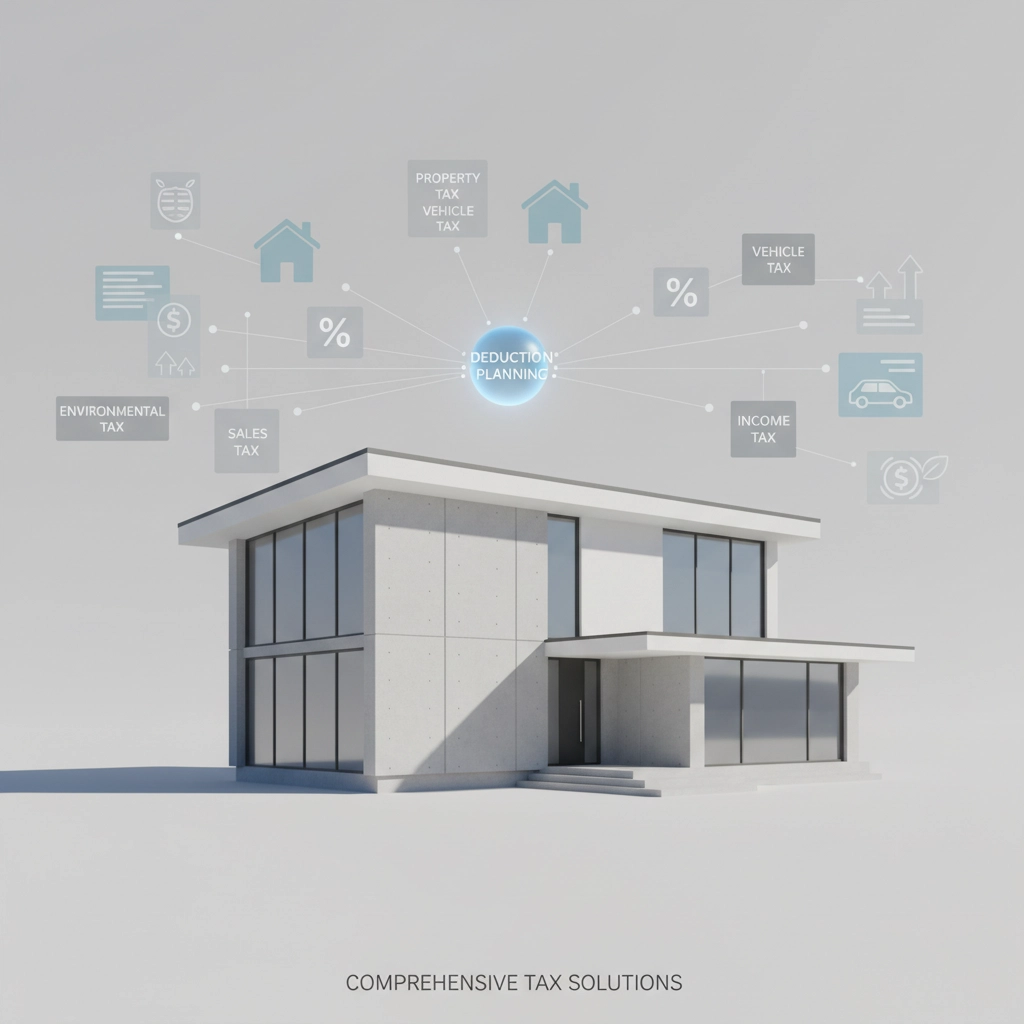The 2025 tax year brings the most significant changes to the tax code in over a decade, thanks to the One Big Beautiful Bill Act signed into law on July 4, 2025. Yet despite these game-changing updates, countless taxpayers are making critical errors that could cost them thousands of dollars in missed opportunities and potential penalties.
As we approach the final weeks of 2025, you still have time to correct course and optimize your tax strategy. Here are the seven most costly mistakes we’re seeing: and exactly how to fix them before December 31st.

Mistake #1: Ignoring the Expanded Child Tax Credit Worth $2,200 Per Child
The Child Tax Credit has permanently increased to $2,200 per child under 17, with built-in inflation adjustments starting this year. This represents a significant jump from previous amounts, yet many parents are still calculating their tax planning based on outdated figures.
The Fix: Review your family situation immediately. If you have qualifying children, this enhanced credit could reduce your tax liability by $2,200 per child. For a family with three young children, that’s $6,600 in potential tax savings. Make sure your withholdings or quarterly payments account for this larger credit to avoid overpaying throughout the year.
Consider whether you need to adjust your W-4 with your employer or modify your estimated tax payments for the fourth quarter. The IRS withholding calculator can help you determine if you’re on track or need immediate adjustments.
Mistake #2: Missing the New $40,000 SALT Deduction Opportunity
The state and local tax (SALT) deduction limit has jumped from $10,000 to $40,000 for taxpayers earning up to $500,000, but this enhancement is temporary: it expires after 2029. Many high-tax state residents don’t realize they can now deduct significantly more of their state income taxes and property taxes.
The Fix: If you live in a high-tax state like New York, California, or New Jersey, gather all documentation of your state income taxes, property taxes, and local taxes paid in 2025. Calculate whether itemizing with the new $40,000 SALT limit gives you a larger deduction than taking the enhanced standard deduction.
For those earning above $500,000, note that the $40,000 limit phases down, so work with a tax professional to determine your exact allowable deduction. You might also consider timing certain state tax payments to maximize your deduction in the most beneficial year.

Mistake #3: Overlooking Brand-New Deductions for Tips, Overtime, and Auto Loans
The 2025 tax bill introduced three completely new deductions that most taxpayers have never claimed before: qualified tip income deduction, qualified overtime pay deduction, and auto loan interest deduction for certain vehicles. These are easy money left on the table if you qualify.
The Fix: Review your 2025 income sources to identify potential savings. If you received tip income in a qualifying industry, worked overtime in eligible positions, or financed a qualifying vehicle, gather your documentation now.
The tip income deduction can provide substantial savings for restaurant workers, delivery drivers, and service industry employees. The overtime deduction applies to specific worker classifications, while the auto loan interest deduction covers certain vehicle purchases made in 2025.
Mistake #4: Filing Before Receiving All Necessary Documentation
With new tax provisions come new forms and documentation requirements. Filing too early: before you’ve received all necessary paperwork: becomes especially risky in 2025 since you may miss documentation for new credits or deductions you’re now eligible to claim.
The Fix: Create a checklist of all expected tax documents, including any new forms related to the 2025 changes. Wait until you have Form 1099-B for investment income, Form 5498 for retirement contributions, and any documentation for the new deductions mentioned above.
If you’re eager to file early, at least wait until mid-February to ensure financial institutions have sent all required forms. Missing documentation could mean missing valuable deductions or facing amendment headaches later.
Mistake #5: Misunderstanding How Higher Standard Deductions Affect Your Strategy
Standard deductions have permanently increased to $31,500 for married couples filing jointly, $15,750 for single filers, and $23,625 for head of household. This means your itemize-versus-standard-deduction calculation has fundamentally changed.
The Fix: Recalculate your deduction strategy from scratch. Many taxpayers who previously itemized should now take the standard deduction, while others who took the standard deduction might benefit from itemizing with the new higher SALT limits.
Don’t rely on last year’s approach. With the enhanced standard deduction and expanded itemized deduction limits, your optimal strategy may have completely flipped. Run both calculations to ensure you’re taking the larger deduction.

Mistake #6: Poor Year-End Tax Planning and Procrastination
The biggest mistake isn’t technical: it’s procedural. Most taxpayers wait until March or April to think about taxes, missing crucial year-end opportunities to optimize their 2025 situation. With major tax law changes this year, this approach is costlier than ever.
The Fix: Act now while you can still influence your 2025 tax outcome. Consider whether you should accelerate or defer income, bunch charitable contributions, max out retirement contributions, or harvest investment losses.
Review your situation against the new tax provisions. Should you pay your 2026 state estimated taxes before December 31st to take advantage of the higher SALT deduction? Can you time any business expenses or equipment purchases to optimize your deductions?
Mistake #7: Making Careless Errors That Trigger IRS Scrutiny
Even with beneficial tax changes, basic mistakes like incorrect Social Security numbers, wrong filing status, math errors, or missing signatures can trigger processing delays, penalties, and unwanted IRS attention. These errors become more costly when you’re claiming new deductions the IRS hasn’t seen before.
The Fix: Triple-check all personal information on your return, especially when claiming new 2025 deductions. Use tax software that automatically catches calculation errors, or work with a qualified professional who understands the new provisions.
Create a pre-filing checklist that includes verifying names match Social Security records, confirming bank account numbers for direct deposit, and ensuring you have proper documentation for any new deductions you’re claiming.

Taking Action Before December 31st
You still have time to optimize your 2025 tax situation, but the window is closing fast. Start by gathering all relevant documentation for the new tax provisions, then calculate how these changes affect your specific situation.
The enhanced Child Tax Credit, expanded SALT deduction, and new deductions for tips, overtime, and auto loan interest could collectively save qualifying taxpayers thousands of dollars. However, these benefits only help if you know about them and claim them correctly.
If your tax situation has become more complex with these changes: and it probably has: consider working with a qualified tax professional who understands the new provisions. The cost of professional help often pays for itself through optimized planning and avoided mistakes.
For more detailed tax planning strategies and wealth management insights, check out our discussions on the Davies Wealth Management podcast at www.1715tcf.com, where we regularly dive into complex financial topics that affect high-net-worth families.
Don’t let 2025’s tax opportunities slip away. Review your situation now, make any necessary adjustments before year-end, and position yourself to maximize these significant new benefits. The next few weeks could determine whether you’re leaving money on the table or optimizing every available advantage the new tax code provides.



Leave a Reply